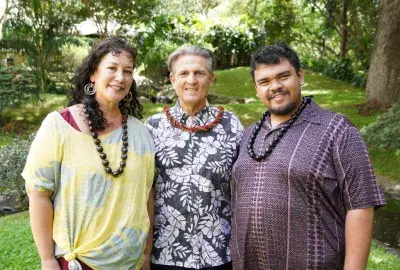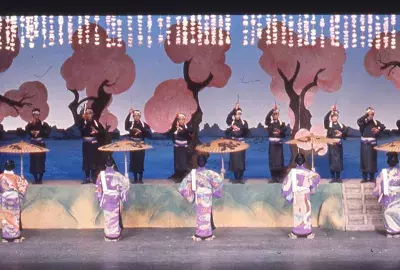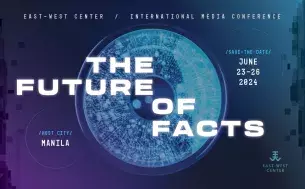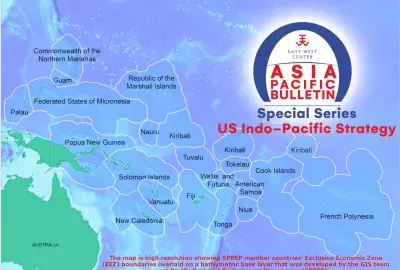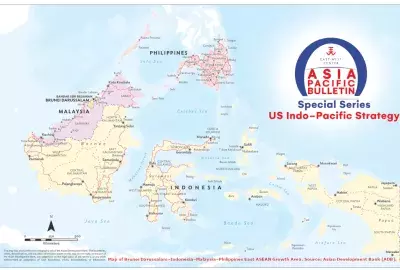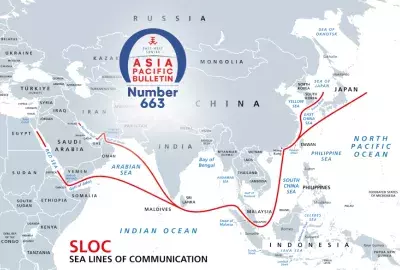Error message
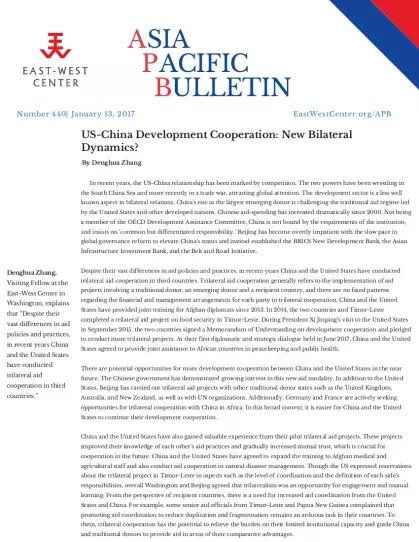
|
Denghua Zhang, Visiting Fellow at the East-West Center in Washington, explains that “Despite their vast differences in aid policies and practices, in recent years China and the United States have conducted trilateral aid cooperation in third countries.” |
Despite their vast differences in aid policies and practices, in recent years China and the United States have conducted trilateral aid cooperation in third countries. Trilateral aid cooperation generally refers to the implementation of aid projects involving a traditional donor, an emerging donor and a recipient country, and there are no fixed patterns regarding the financial and management arrangements for each party in trilateral cooperation. China and the United States have provided joint training for Afghan diplomats since 2013. In 2014, the two countries and Timor-Leste completed a trilateral aid project on food security in Timor-Leste. During President Xi Jinping’s visit to the United States in September 2015, the two countries signed a Memorandum of Understanding on development cooperation and pledged to conduct more trilateral projects. At their first diplomatic and strategic dialogue held in June 2017, China and the United States agreed to provide joint assistance to African countries in peacekeeping and public health.
There are potential opportunities for more development cooperation between China and the United States in the near future. The Chinese government has demonstrated growing interest in this new aid modality. In addition to the United States, Beijing has carried out trilateral aid projects with other traditional donor states such as the United Kingdom, Australia, and New Zealand, as well as with UN organizations. Additionally, Germany and France are actively seeking opportunities for trilateral cooperation with China in Africa. In this broad context, it is easier for China and the United States to continue their development cooperation.
China and the United States have also gained valuable experience from their pilot trilateral aid projects. These projects improved their knowledge of each other’s aid practices and gradually increased mutual trust, which is crucial for cooperation in the future. China and the United States have agreed to expand the training to Afghan medical and agricultural staff and also conduct aid cooperation in natural disaster management. Though the US expressed reservations about the trilateral project in Timor-Leste in aspects such as the level of coordination and the definition of each side’s responsibilities, overall Washington and Beijing agreed that trilateralism was an opportunity for engagement and mutual learning. From the perspective of recipient countries, there is a need for increased aid coordination from the United States and China. For example, some senior aid officials from Timor-Leste and Papua New Guinea complained that promoting aid coordination to reduce duplication and fragmentation remains an arduous task in their countries. To them, trilateral cooperation has the potential to relieve the burden on their limited institutional capacity and guide China and traditional donors to provide aid in areas of their comparative advantages.
Second, China-US trilateral aid cooperation is still in an early stage. Risk-averse Chinese aid officials — especially those from the Ministry of Commerce, the main caretaker of Chinese aid program — are cautious about this new modality. They have just started to learn to work in partnership with their American counterparts. From the US perspective, government agencies have expressed different views on development engagement with China. Deep-rooted political mistrust remains a hurdle and will persist for a long time. With respect to aid efficacy, as trilateral aid is relatively a new thing, whether it is able to deliver better aid results than bilateral aid demands more empirical analysis.
Third, the Chinese aid system is currently in transition, which affects its trilateral cooperation with traditional donors, including the United States. In March 2018, Beijing announced the decision to establish China’s international development cooperation agency, which aims to enhance aid planning and monitoring and support the Belt and Road Initiative. Though the agency was officially launched in April, it has not fully functioned yet. More work is underway such as establishing the organizational structure, doing top-level planning of Chinese aid, and straightening out relations between the agency and a number of powerful ministries involved in aid management — especially the ministries of commerce, foreign affairs, and finance. So far China has not issued a clear policy for trilateral aid cooperation.
The future of China-US trilateral aid cooperation will ultimately depend on the political will of the two governments, and whether they have confidence in this new aid modality. Trilateral aid cooperation has the potential to contribute to the broadening of bilateral relations. It is less sensitive compared with cooperation in some other sectors that involve substantial commercial or strategic interests. In this sense, trilateral aid cooperation can play a role in easing the tensions in China-US relations. With regards to aid effectiveness, the impact of trilateral aid has yet to be further tested.
Lessons drawn from China’s overall pilot trilateral aid cooperation shed light on the China-US partnership in the future. Continued high-level political support from both sides is crucial, especially at a stage when competition is more evident in bilateral relations. It will also be easier for China and the United States to conduct trilateral aid cooperation in countries that are strategically less important to both of them, and in less sensitive areas such as agriculture, health, disaster management, renewable energy, and climate change. To seek support from recipient countries is also necessary as China insists on the principle that trilateral aid cooperation should be raised, supported, and led by recipient countries.
|
Denghua Zhang, Visiting Fellow at the East-West Center in Washington, explains that “Despite their vast differences in aid policies and practices, in recent years China and the United States have conducted trilateral aid cooperation in third countries.” |
Despite their vast differences in aid policies and practices, in recent years China and the United States have conducted trilateral aid cooperation in third countries. Trilateral aid cooperation generally refers to the implementation of aid projects involving a traditional donor, an emerging donor and a recipient country, and there are no fixed patterns regarding the financial and management arrangements for each party in trilateral cooperation. China and the United States have provided joint training for Afghan diplomats since 2013. In 2014, the two countries and Timor-Leste completed a trilateral aid project on food security in Timor-Leste. During President Xi Jinping’s visit to the United States in September 2015, the two countries signed a Memorandum of Understanding on development cooperation and pledged to conduct more trilateral projects. At their first diplomatic and strategic dialogue held in June 2017, China and the United States agreed to provide joint assistance to African countries in peacekeeping and public health.
There are potential opportunities for more development cooperation between China and the United States in the near future. The Chinese government has demonstrated growing interest in this new aid modality. In addition to the United States, Beijing has carried out trilateral aid projects with other traditional donor states such as the United Kingdom, Australia, and New Zealand, as well as with UN organizations. Additionally, Germany and France are actively seeking opportunities for trilateral cooperation with China in Africa. In this broad context, it is easier for China and the United States to continue their development cooperation.
China and the United States have also gained valuable experience from their pilot trilateral aid projects. These projects improved their knowledge of each other’s aid practices and gradually increased mutual trust, which is crucial for cooperation in the future. China and the United States have agreed to expand the training to Afghan medical and agricultural staff and also conduct aid cooperation in natural disaster management. Though the US expressed reservations about the trilateral project in Timor-Leste in aspects such as the level of coordination and the definition of each side’s responsibilities, overall Washington and Beijing agreed that trilateralism was an opportunity for engagement and mutual learning. From the perspective of recipient countries, there is a need for increased aid coordination from the United States and China. For example, some senior aid officials from Timor-Leste and Papua New Guinea complained that promoting aid coordination to reduce duplication and fragmentation remains an arduous task in their countries. To them, trilateral cooperation has the potential to relieve the burden on their limited institutional capacity and guide China and traditional donors to provide aid in areas of their comparative advantages.
Second, China-US trilateral aid cooperation is still in an early stage. Risk-averse Chinese aid officials — especially those from the Ministry of Commerce, the main caretaker of Chinese aid program — are cautious about this new modality. They have just started to learn to work in partnership with their American counterparts. From the US perspective, government agencies have expressed different views on development engagement with China. Deep-rooted political mistrust remains a hurdle and will persist for a long time. With respect to aid efficacy, as trilateral aid is relatively a new thing, whether it is able to deliver better aid results than bilateral aid demands more empirical analysis.
Third, the Chinese aid system is currently in transition, which affects its trilateral cooperation with traditional donors, including the United States. In March 2018, Beijing announced the decision to establish China’s international development cooperation agency, which aims to enhance aid planning and monitoring and support the Belt and Road Initiative. Though the agency was officially launched in April, it has not fully functioned yet. More work is underway such as establishing the organizational structure, doing top-level planning of Chinese aid, and straightening out relations between the agency and a number of powerful ministries involved in aid management — especially the ministries of commerce, foreign affairs, and finance. So far China has not issued a clear policy for trilateral aid cooperation.
The future of China-US trilateral aid cooperation will ultimately depend on the political will of the two governments, and whether they have confidence in this new aid modality. Trilateral aid cooperation has the potential to contribute to the broadening of bilateral relations. It is less sensitive compared with cooperation in some other sectors that involve substantial commercial or strategic interests. In this sense, trilateral aid cooperation can play a role in easing the tensions in China-US relations. With regards to aid effectiveness, the impact of trilateral aid has yet to be further tested.
Lessons drawn from China’s overall pilot trilateral aid cooperation shed light on the China-US partnership in the future. Continued high-level political support from both sides is crucial, especially at a stage when competition is more evident in bilateral relations. It will also be easier for China and the United States to conduct trilateral aid cooperation in countries that are strategically less important to both of them, and in less sensitive areas such as agriculture, health, disaster management, renewable energy, and climate change. To seek support from recipient countries is also necessary as China insists on the principle that trilateral aid cooperation should be raised, supported, and led by recipient countries.


